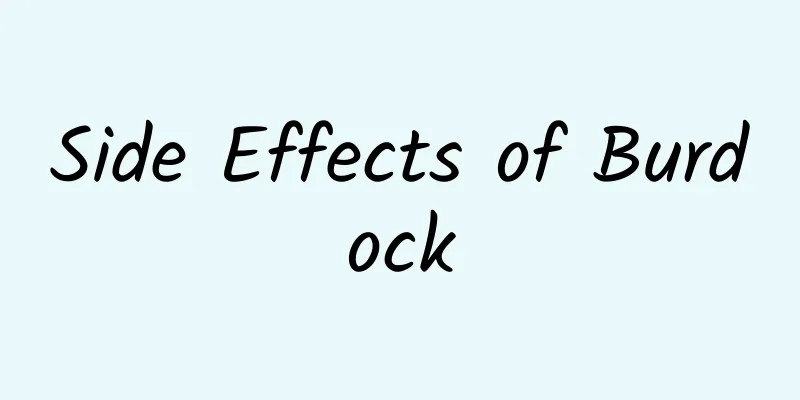What to do if corns grow on toes

|
Speaking of corns on the toes, many people have encountered various situations of corns, but the locations of the corns are different. However, for people with corns on their toes, since the corns are located on the feet, some people will inevitably squeeze and collide with the corns while walking, resulting in foot pain. In severe cases, people may even be afraid to walk. Therefore, the treatment of corns on toes is extremely urgent. In order to prevent the continuous enlargement of corns and bring inconvenience to life and work, many people have racked their brains for the treatment of corns. So, what should be done with corns on toes? Methods/Steps Corns are cone-shaped keratin growths that occur on the soles of the feet or toes due to long-term compression or friction. Epidemic characteristics Pathogenesis For treatment, it is advisable to first soften the affected area with hot water, scrape off the surface stratum corneum, protect the surrounding area and expose the corn, and then apply various strong keratin peeling agents, such as commercially available corn ointment and 15% salicylic acid and lactic acid levofloxacin ointment. 0.3% retinoic acid ointment, 10% silver nitrate solution, etc., repeat every few days until the tip is dug out. If the corn is not infected, it can be removed by excision. The method is to use a pointed scalpel to make a circular incision along the edge of the thickened keratin, clamp it with toothed tweezers, peel it off on the upper layer of the zona pellucida, and dig out the corn. You will feel no pain when walking immediately after the tumor is dug out, and the pain and recurrence-free period will last for at least 2 months. If it recurs, you can dig it out again. Generally, it can be cured after 1-2 times, and sometimes 5-6 times. The above-mentioned digging method can be combined with external application for combined treatment. To prevent this, you should wear suitable and soft boots or use a small piece of sponge pad with holes to protect the local area from pressure. Clinical manifestations Corns are conical keratin plugs embedded in the skin, usually ranging in size from a needle tip to a soybean or larger, with a smooth surface that is level with the skin surface or slightly raised, and are light yellow or dark yellow and translucent. The tip of the cone extends into the skin, forming a wedge shape, and the bottom is flat and exposed outside the skin. If the keratin on the surface is scraped off with force, a hard needle-like keratin plug can be seen in the center, with a circle of transparent light yellow ring around it, shaped like a corn. Most of them are 1-2, occasionally multiple. Generally, they are not easy to heal on their own, but if the causative factors are removed. It can also disappear naturally. Corns can be hard or soft. Hard corns often occur on the soles of the feet, the outside of the little toes, the back of the toes, and other bony protrusions or places that are easily subjected to pressure and friction. They are round or oval in shape. The surface is flat, hard and light yellow in color, and its tip can reach deep into the papillary layer of the skin. When standing or walking, it often causes severe pain due to compression of the sensory nerve endings in the papillary layer, making it difficult to walk. Soft corns often occur on one toe between two adjacent toes. Due to moisture, they become softened and become grayish white and have a foul odor. Plantar warts occur due to a viral infection. Differential diagnosis of the causes of complications It is more common in people who walk frequently or stand for long periods of time, and is often occupation-related. Its important inducing factors are local friction and external pressure, such as wearing inappropriate boots and shoes, which cause long-term stimulation and friction of the feet. Therefore, both feet often become affected at the same time, and it is more common in thin young and middle-aged people. It is often associated with chronic keratotic and desquamative tinea pedis. First, pick open the old white skin, smash the grubs (the larvae of beetles, called earth silkworms, soil silkworms, walnut worms, etc. in different regions), and apply adhesive tape to the affected area. If you have corns on your feet, here are some ways to remove them. 1. Take 10 black plums, grind them into fine powder, put them into a bottle, add sesame oil and soak for 7 to 10 days, and mix them into ointment. Soak the corns in warm salt water, wait for the rough skin to soften and remove it, apply an appropriate amount of ointment on the corns, and then bandage them with gauze. Change the ointment every 12 hours. One course of treatment is 3 days. 2. Take 10 grams each of Rehmannia root bark and safflower, grind them into fine powder, add appropriate amount of sesame oil to make a paste. After soaking your feet in hot water every night, apply an appropriate amount of medicated paste on the corns, then cover them with non-toxic plastic film and secure them with tape. 3. Take aloe vera and a little salt water and grind them into a medicinal paste. After soaking your feet in hot water every night, apply an appropriate amount of medicated paste on the corns, cover them with non-toxic plastic film, and then secure them with tape. Take once a day, 10 days as a course of treatment. 4. Take a purple garlic, a scallion, and 3 to 5 peppercorns, mix them together into a paste, apply it on the corns, and seal it with adhesive tape. Remove the adhesive tape and medicinal mud after 24 hours. If the condition does not heal after one use, it can be used again. Through the introduction of what to do about corns on the toes in this article, I believe that for those who are suffering from corns on the toes, it is undoubtedly a very happy thing. Here, when treating corns on the toes, you must pay attention to follow the treatment steps introduced in this article. |
<<: What to do if your toes are itchy and peeling
>>: How to reduce swelling of toes
Recommend
Boiling coriander in water can cleanse the kidneys. Here are the benefits of boiling coriander in water
The method of drinking water boiled with coriande...
What causes pain when you have a cold?
The common cold is the most common disease among ...
Will masturbating twice a week damage your memory?
Whether male or female, at a certain age, they wi...
Can rhinitis be cured?
Rhinitis is mainly some non-seasonal rhinitis, wh...
How to Relieve Gout Pain
Everyone should be familiar with the disease of g...
Can I eat red beans when I am pregnant?
The functions and uses of red beans are very wide...
What is sand dermatitis, what are the symptoms and how to treat it?
Many playgrounds have special sand piles for chil...
What to do if you have chronic constipation
The harm of constipation is self-evident, and if ...
Can I get pregnant if I have sex one week after a medical abortion?
Women can become pregnant after having sex, but m...
What causes blood in stool?
Now people's lives are getting better and bet...
The harm of high myocardial enzymes in babies
The harm of high myocardial enzymes in babies is ...
There is a small ball of flesh beside the eye
If a small lump of flesh grows next to the eye, i...
There are two common prescriptions in TCM for kidney disease treatment
Kidney disease is one of the diseases that pose t...
What are varicose veins?
Varicose veins refer to the phenomenon of tortuos...
Bright red bleeding during ovulation
We all know that the body structures of men and w...









